Dog Cut Paw Pad Injury – You Need To Know If Your Dog Has Cut His Paw Pad

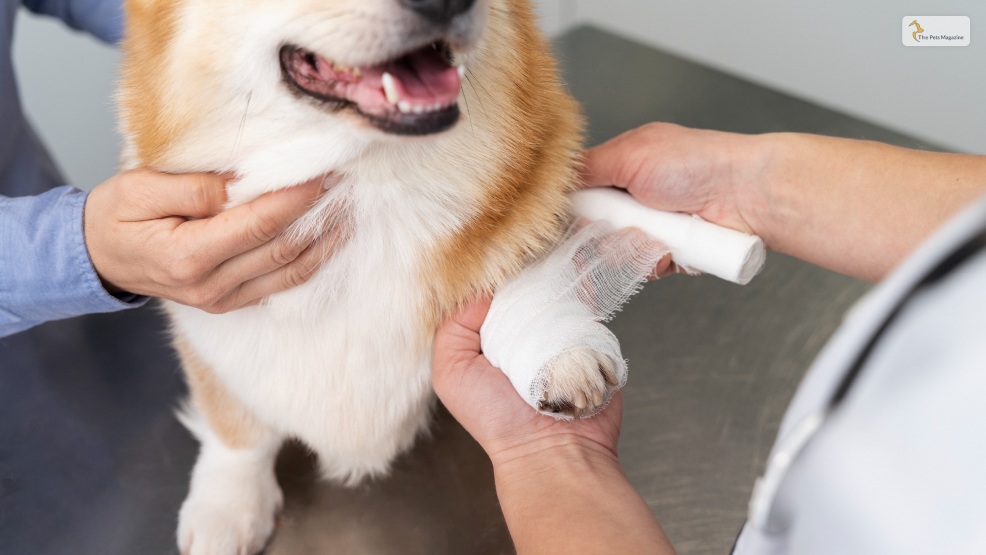
As a dog parent, I get very tense and worried when I see my dog limping – a feeling only my fellow pet parents will understand. I start worrying about whether it is due to something small or a serious injury like a dog’s cut paw pad.
Yes, a paw pad injury is a serious one because our fur babies rely on their paws for almost everything they do, from running and playing to simply walking around the house.
The paw pads of dogs are incredibly resilient and can withstand various surfaces and conditions. But they are not completely invincible; as a result, injured paw pads are quite a common issue among dogs. It can cause a lot of discomfort and pain, too. So it is important to treat them as soon as possible.
In this article, we will explore everything you need to know about dog paw pad injuries, including how to prevent them and what to do if your dog suffers from one.
What Are Paw Pads Injuries?
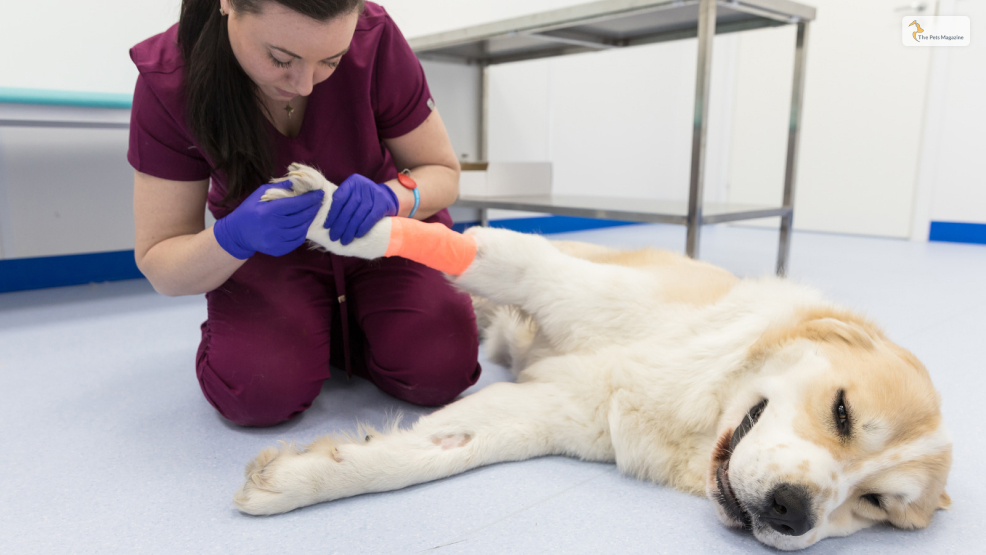
If you have a dog, then you need to know that our fur babies have three main types of paw pads: the metatarsal pad, the primary pad, and the metacarpal pad, which are located right above their foot.
The paw pads are an essential part of a dog’s body. It provides shock absorption when the dog jumps or runs. The paw pads are used to balance different temperatures on which the dog might walk or run. Just like humans, the paw pads of dogs develop calluses with time, and they are nothing but an extra layer of protection for the small puppers.
There are many ways your dog can hurt its paw pads, either by stones, broken glass, or any other sharp object. Even harmful chemical substances are also very dangerous for sensitive dogs who cut their paws. Even if they are running or walking outside on a hot day, the hot concrete road might burn their paws as well. Healthy paw pads are very important for healthy dogs.
Signs of Paw Pad Injuries
Some common signs of dog cut paw pad injury are as follows:
- Limping: If your dog is limping, or favoring one paw over others, or not using one of its paws at all, it could be a sign of paw pad pain or injury.
- Excessive licking: Your dog excessively licking one of its paws can indicate paw pad injury. They do this because the injured area is causing them irritation or discomfort.
- Redness or swelling: Look for redness, swelling, or cuts on the paw pads, which is one of the most common signs of paw pad injury. If your dog’s paw looks cracked and raw or has blisters, that is also a cause for concern because these are signs of hyperkeratosis dog paw.
- Pain when touched: Your dog might show signs of pain or discomfort when you touch the injured paw.
If you notice any signs of paw pad problems, consult with your veterinarian. They can provide a proper diagnosis and recommend appropriate treatment.
Different Types Of Injuries
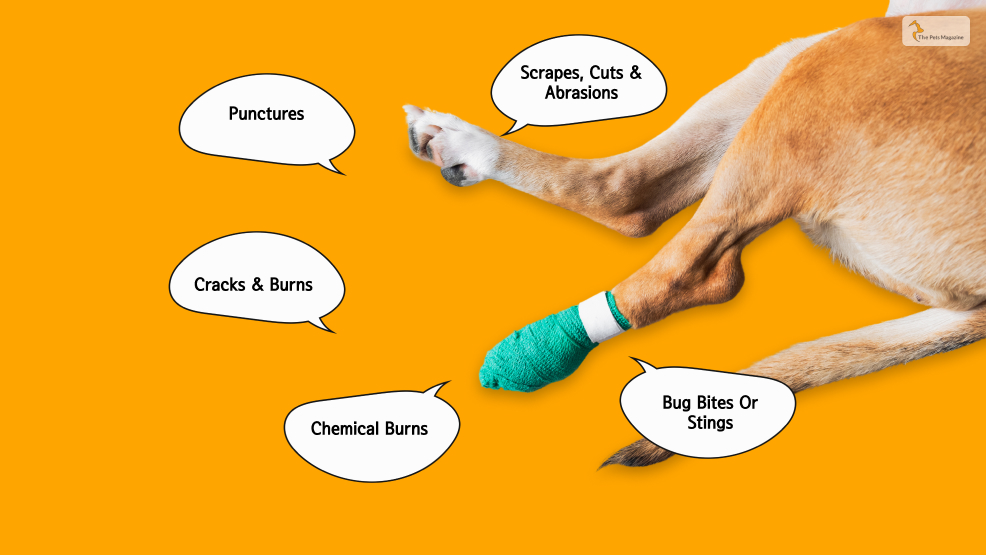
There are many different types of injuries that your dog might get into, so if your dog gets injured due to one of these injuries, then it is important that you take them to the vet immediately. So here are a few different emergency situations that your dog might get into.
1. Scrapes, Cuts & Abrasions
While walking, running, or jumping, puppies or adult dogs hardly see where they are going, so cutting or scrapping their paw pads is quite easy. Sharp objects like broken glass, sharp objects, or other little rocks can easily hurt their paw pads.
2. Punctures
If you and your dog are walking through the woods, then it is easy for them to puncture their paw pads with broken sticks and pieces of wood lying here and there. So be very careful when you are walking with your dog through the woods or a park.
3. Cracks & Burns
When your paw pads are dry, they tend to crack, and those cracks tend to hurt a lot if not taken care of. So you should apply lotion to the paw pads to keep them moist.
During the hot summer months, the streets, sidewalks, and other rocks tend to get very hot and burn your dog’s paw pads which might hurt them a lot. So it would be great if you don’t bring out your dog outside during the daytime.
4. Chemical Burns
Even if there are many possible dangers outside, there are a few dangers at home as well, such as bleach, pool chlorinators, cement, fertilizers, cleaners, and even laundry detergent. So you should properly keep your chemical products properly at home.
5. Bug Bites Or Stings
When it comes to stings or bug bites, bee stings, and bites are pretty common for dogs. In certain areas, due to mosquito bites, dogs get hurt a lot. Ground wasps and fire ants are also very harmful when it comes to bug bites and stings.
How To Treat A Paw Injury At Home?
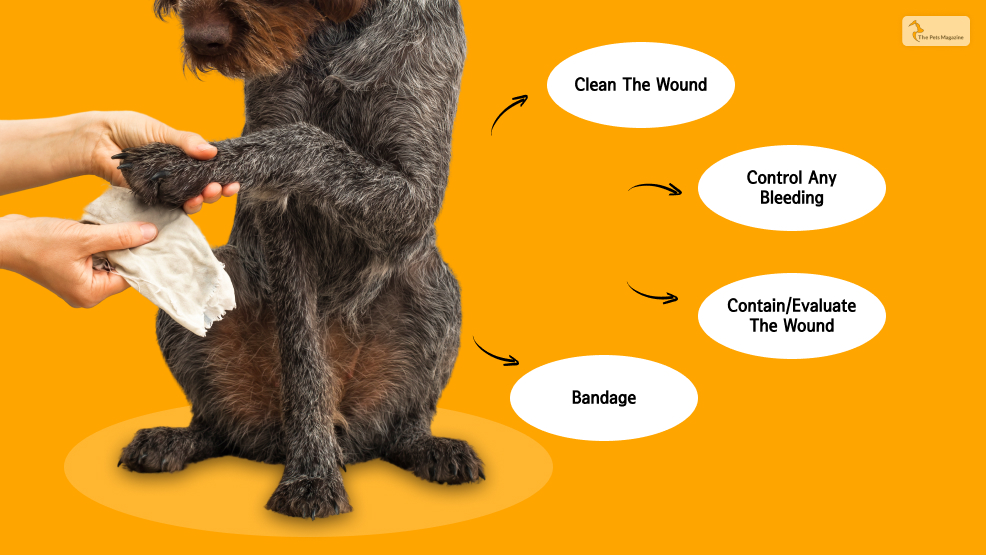
If the injury is on your dog’s paw, then you can just take care of it at home if you have a pet first aid kit. Here is how you can treat an injured dog cut paw pad at home
Clean The Wound
When it comes to cleaning your dog’s paw pads, it is very important that, if your dog has broken pieces of glass stuck to their paws. Then, it could be great if you pluck the glass with tweezers. With clean tweezers, pluck out the debris from the glasses.
Then, clean the wound properly by putting it under cold running water. You may or may not use soap to clean the cut or burn on your dog’s cut paw pad. But you need to be very careful when you are removing the debris and cleaning everything out.
Control Any Bleeding
After cleaning, if you see that little or more blood is coming out from your dog paw pad, then you need to take a clean towel and apply pressure to it as much as possible.
For minor cuts, the bleeding should stop in a few minutes, but for deeper wounds, the blood might not stop as easily. But if the bleeding doesn’t stop for about 10 – 15 minutes, you should take your dog to a pet emergency room.
Contain/Evaluate The Wound
If you are able to stop the bleeding, then it’s time that you evaluate your dog cut paw pad. Then, you should evaluate the wound, whether it is a deep cut or a clear small cut, and then you should take your dog to the emergency room, depending on the severity of the wound.
Bandage
Now, the last step that you should do is to bandage your dog cut paw pad, then bandage the wound properly. Tie the bandage properly with paper tape, and roll the gauze properly, tight enough so that it doesn’t get loose.
How to Take Proper Care of a Dog’s Paw Pads
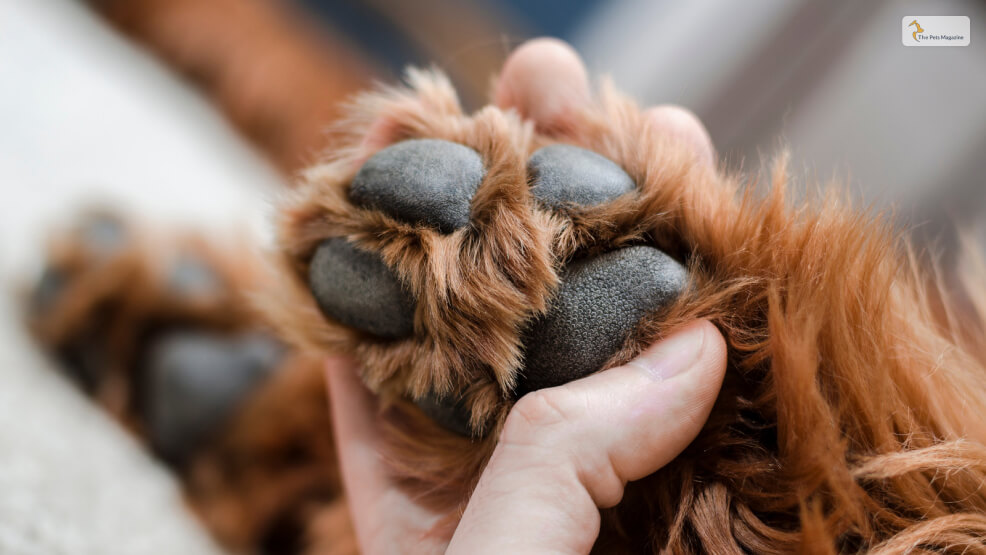
Your dog’s paw pads are essential for their comfort and mobility. Here are some tips to keep them healthy:
Daily checks
Inspect your dog’s paw pads daily for any signs of injury, cuts, or foreign objects. This should be done after walks, especially if they’ve been in rough terrain or around hot surfaces.
Keep Paws Clean
After walks or outdoor activities, wipe your dog’s paws with a damp cloth or pet wipes to remove dirt, debris, and potential allergens. Then if your dog’s paw pads are dry to the touch, you can apply a paw balm or petroleum jelly. You should also trim your dog’s nails regularly. It is because overgrown nails can put pressure on the paw pads and cause discomfort.
Protection From Extreme Temperatures and Terrains
If you live in areas with extreme temperature, you need to take suitable measures to protect your dog’s paws. For instance, if you live in a place which gets very cold during winters and there is a lot of snowfall, then use paw protectors or booties to protect their paws from cold pavement and ice.
Similarly, during summer months, avoid walking your dog on hot surfaces like asphalt or concrete during the summer. You should also use dog booties if you are taking your dog for walks on rocky, uneven surfaces.
Avoid Harsh Chemicals
Don’t use harsh chemicals or soaps on your dog’s paws as these can dry out your dog’s paws quickly. Also be cautious of the surfaces your dog walks on, especially those treated with chemicals like de-icers or pesticides. Rinse their paws after exposure to such surfaces.
Wrapping Up!
Thus, you should keep an eye on your dog’s paw pads, for their own good. Whether it’s a minor scrape or a more serious injury, knowing how to identify and treat these issues can make a world of difference for your furry friend. Remember, prevention is always better than cure—regularly check their paws, keep them clean, and avoid harsh surfaces during walks. And if you ever notice something off, don’t hesitate to consult your vet. After all, a happy dog means a happy owner!








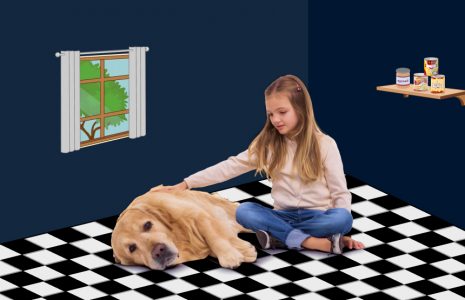
Leave A Comment